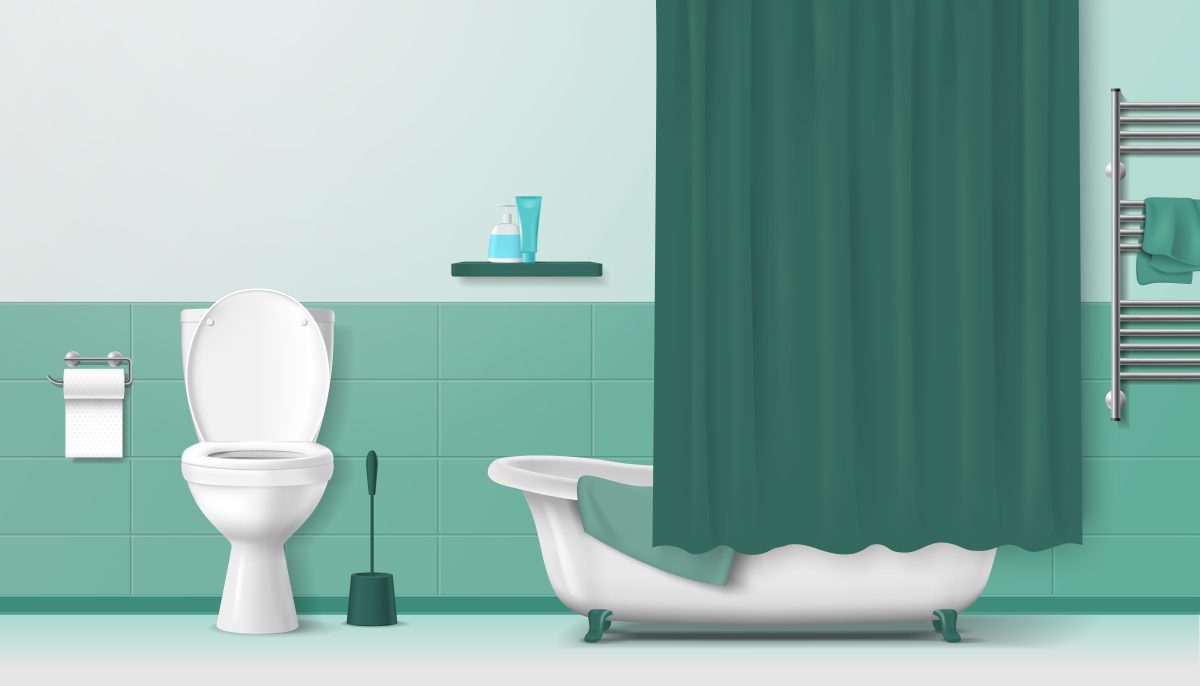Can You Really Get STDs from a Toilet Seat?
The risk of contracting sexually transmitted diseases (STDs) from a toilet seat is a prominent urban legend shrouded in misapprehension and fear. As sexually active adults, it’s crucial to discern truth from myth, especially when the topic concerns our health and well-being. Despite widespread concern, the transmission of STDs via a toilet seat is exceptionally unlikely, attributable to the nature of the pathogens involved.
Debunking Toilet Seat Transmission Myths
The transmission of sexually transmitted diseases (STDs) via contact with a toilet seat is a prevalent misconception stemming from anxiety rather than scientific evidence. STD-causing organisms, such as bacteria, viruses, and parasites, typically require direct person-to-person contact for transmission due to their need for a warm, moist environment to survive and a suitable entry point into a new host. Toilet seats, being non-porous and typically located in well-ventilated areas, create a hostile environment for these pathogens. Furthermore, most STDs cannot survive long on surfaces like toilet seats, thus significantly reducing the risk of transmission through this medium. It’s imperative to rely on validated health information and not succumb to unfounded fears.
The Reality of STDs and Public Restrooms
Engaging in intimate contact remains the primary mode of STD transmission; casual contact with surfaces, like toilet seats, provides minimal risk. Yet, public perception often inflates this improbable threat.
Skin-to-skin contact with infected areas, not mere presence on public toilet seats, is crucial for STD transmission. The hostile environment and brief pathogen survival time diminish the already low risk substantially. Human papillomavirus can remain on surfaces, but infection requires direct contact.
When considering STD risk, public restrooms evoke undue concern. Direct contact with mucous membranes or disrupted skin is necessary for transmission, not sitting on a shared surface like a toilet seat. The concern should pivot to safe sexual practices.
Notorious STD Misconceptions Involving Toilets
Public restrooms are often believed to be a hotbed for sexually transmitted diseases (STDs), but this is a significant misconception.
- Herpes and toilet seats: It’s commonly thought that herpes can be transmitted via toilet seats; however, the herpes simplex virus does not survive long outside the human body, thus making transmission in this manner highly improbable.
- Contracting HIV from seats: Fears persist about acquiring HIV from toilet seats. HIV cannot survive long outside the human body, and transmission requires direct exchange of bodily fluids, not mere contact with surfaces.
- HPV infection risks: While Human papillomavirus (HPV) can persist on surfaces, infection necessitates skin-to-skin contact and is not viable through casual contact with a toilet seat.
Transmission of STDs requires conditions not typically met by simply sitting on a toilet seat.
Proper sexual health education dispels these myths, encouraging safer sex and minimizing groundless fears linked to public restroom use.
Understanding STD Transmission Routes
The predominant mode of sexually transmitted disease (STD) transmission is through sexual contact involving the exchange of bodily fluids.
To clarify, common pathogens that cause STDs, such as Neisseria gonorrhoeae (gonorrhea) and Treponema pallidum (syphilis), require a suitable environment to survive and are thus unlikely to be transmitted by nonsexual means, such as contact with inanimate objects.
This distinction between “sexually-transmitted” and “casually-transmitted” is crucial to contextualizing risk and fostering appropriate health-seeking behavior.
Common STDs and Their Actual Spread Mechanisms
Sexually transmitted diseases (STDs) primarily transfer through intimate contact, not through inert surfaces.
- Human Immunodeficiency Virus (HIV): Transmits through the exchange of bodily fluids including blood, semen, and vaginal secretions.
- Chlamydia: Spread via sexual contact, including vaginal, anal, and oral intercourse.
- Gonorrhea: Similar to Chlamydia, it requires intimate contact for transmission.
- Syphilis: Moves through direct contact with syphilitic sores, often during sexual activity.
- Herpes Simplex Virus (HSV): Conveyed through direct contact with herpes sores or infected skin and mucous membranes.
- Human Papillomavirus (HPV): Requires skin-to-skin contact, mainly through sexual activity, for transmission.
- Hepatitis B: Often spreads through sexual contact but can also be transmitted via contaminated needles or from mother to child during childbirth.
Causative agents of STDs cannot survive long on surfaces like toilet seats. Environmental stability of STD pathogens is insufficient for transmission from a non-biological surface.
Why Toilet Seats Are Unlikely Vessels
The hypothetically possible transmission of STDs via a toilet seat is extraordinarily rare, namely due to the fragile nature of the pathogens when exposed outside their human host environment. STD-causing microorganisms require very specific conditions to survive and are generally not resilient to the variability of external environments.
To transmit an STD, prolonged and intimate contact with mucous membranes is typically necessary, which does not occur through casual contact with inanimate objects.
Furthermore, STD pathogens are usually highly specialized in their mode of transfer, often relying on direct access to the bloodstream or mucosal tissues (such as the vaginal or urethral lining) to establish infection.
Daily cleaning routines and the design of toilet seats mitigate the risk even further, disinfecting potential pathogens and reducing their already low chance of viability on such surfaces, thereby protecting against the theoretical risk of transmission.
While the mere presence of a pathogen on a surface may incite concern, the reality is that the potential for infection diminishes significantly once outside the human body. It takes a suitable environment and direct access to susceptible tissues for these pathogens to proliferate.
Consequently, contracting an STD from a toilet seat’s surface is a highly improbable event. Should you have concerns regarding potential STD exposure, services like STDCheck offer confidential testing options to ensure your health and peace of mind.
Recognizing At-Risk Scenarios for STDs
Sexual health vigilance necessitates an understanding of the primary modes of STD transmission, which are fundamentally rooted in intimate contact. Savvy awareness concerning which scenarios put individuals at higher risk could prevent unwarranted panic and promote proactive health measures. When it comes to the transmission of STDs, it is the direct exchange of bodily fluids or the intimate contact between mucosal surfaces that poses a genuine risk. Public health knowledge underscores that scenarios involving unprotected sexual contact, or the sharing of needles, rank among the highest risk factors for STD transmission, rather than casual or incidental contact with inanimate objects such as toilet seats.
Hygiene Best Practices to Mitigate Risks
When utilizing public restrooms, adopt a cautious approach. It’s recommended to visually inspect the toilet seat for cleanliness before use and, if possible, utilize disposable toilet seat covers or tissues to create a barrier. Additionally, avoid contact with any fluids on the toilet seat. Handwashing with soap and water following restroom use is an essential practice for preventing the spread of pathogens. Always carry hand sanitizer when traveling and consider covering the toilet seat with protective paper.
Ensuring the regular disinfection of frequently touched objects and surfaces within your personal environment, particularly your bathroom, is crucial to minimizing potential pathogen transmission. As of the latest guidelines issued in 2023, robust cleaning protocols and the correct use of EPA-registered disinfectants can greatly reduce the likelihood of encountering infectious agents responsible for STDs on surfaces within the home.
Identifying Symptoms: When to Seek Testing
Be mindful of any unexplained symptoms.
If you notice unusual signs such as rashes, sores, itching, or discharge, take action immediately. These might be indicative of a sexually transmitted infection (STI), even if they seem benign or fleeting. Early detection can significantly increase the efficacy of treatment. Regrettably, STIs can be mistaken for less serious conditions, underlining the importance of seeking professional medical advice if symptoms persist.
Persistent physical changes warrant attention.
Even if you practice prudent hygiene, infections can arise. It is vital to recognize the signs – such as unusual bumps or persistent pain during urination – as a prompt to seek professional medical consultation and, if advised, undergo testing through reputable services like STDCheck.
Discomfort during intercourse should prompt evaluation.
If you’ve encountered discomfort during sexual activity or have noticed a shift in your reproductive health, such as changes in menstrual cycles for women, prompt evaluation is paramount. STDCheck provides a convenient platform that aligns with the latest guidelines from 2023, ensuring access to reliable testing procedures. Employing certified labs, the service ensures confidentiality and accurate diagnostics, facilitating early detection and intervention for any STIs contracted under rare or common circumstances alike.
Leveraging STDCheck for Peace of Mind
Early detection is crucial in preventing health complications that may arise from untreated STIs. STDCheck offers a reliable means of testing, accessible with just a few clicks.
In moments of doubt, STDCheck’s user-friendly interface simplifies the process of obtaining comprehensive STI screening. Confidentiality is paramount, and results are delivered with expediency and clarity, mitigating undue stress.
Empower yourself with knowledge and take control of your sexual health. STDCheck is your ally in maintaining a healthy and informed lifestyle.
How STDCheck Simplifies the Testing Process
STDCheck streamlines STI testing with a focus on accessibility and simplicity.
- Accessibility: Numerous testing centers nationwide.
- Privacy: Tests are ordered online for confidentiality.
- Efficiency: Quick and simple testing procedure.
- Speed: Results are available within 1–2 days.
- Support: Certified care advisors ready to assist.
Testing can be completed in under five minutes, without the need for appointments.
The service provides detailed instructions, ensuring ease of use and peace of mind throughout the process.
Taking Action: Steps to Get Tested Through STDCheck
Initiate the testing journey by visiting the STDCheck website, where confidentiality and accuracy are guaranteed at each step of the process.
Select the STD tests you require or opt for a comprehensive panel.
Complete your order online and choose from over 4,500 testing centers nationwide to find one conveniently located near you, where no appointment is necessary.
Visit the selected testing center with your test requisition form, provide a urine or blood sample – depending on the test – and await your results, which are securely delivered to you online. In the event of a positive result, STDCheck offers a consultation with a physician who can prescribe treatment or refer you for further medical care.
Medically Reviewed by Julie Hutchinson, MD on March 15, 2024
Secure and Confidential
STD testing services
The fastest results possbile - available in 1 to 2 days

Tagged
Categorized As
Author: STD Check Editorial Team
At STDCheck.com, we go to great lengths to ensure quality content. We’re using our own collection of data. It is not bought or made up for “click-bait” purposes. We don’t entice traffic with cheesy graphics or raunchy headlines. Our information is to promote STD testing, educate people, let go of social stigmas, and bring awareness. We also provide a completely confidential atmosphere through private testing. When we produce an article, it is fact-based. We check it with medical advisors that approve it. Our staff consists of doctors and other medical professionals who peer review the content we make available on STDCheck.com. From all over the world, we have sourced the best and the brightest content developers, including medical professionals, marketing engineers, data scientists, content specialists, and media relations.




